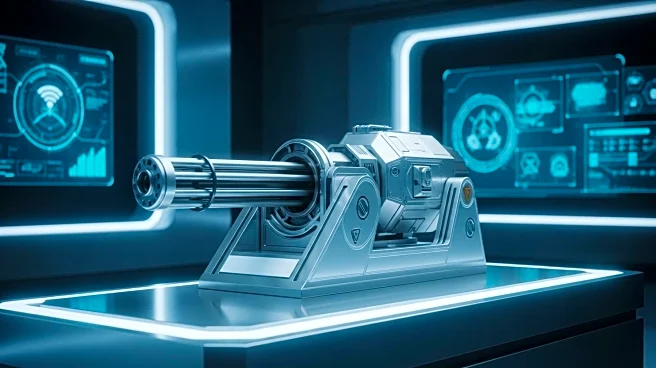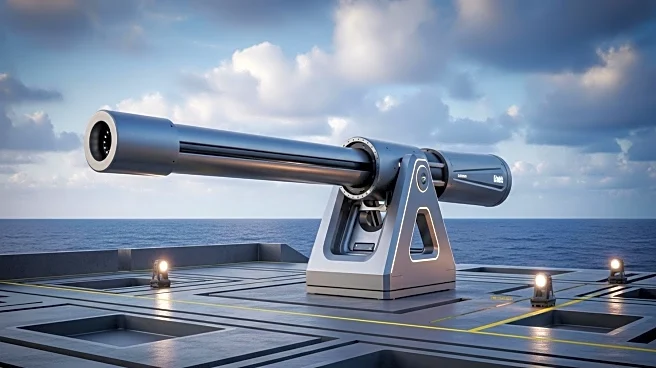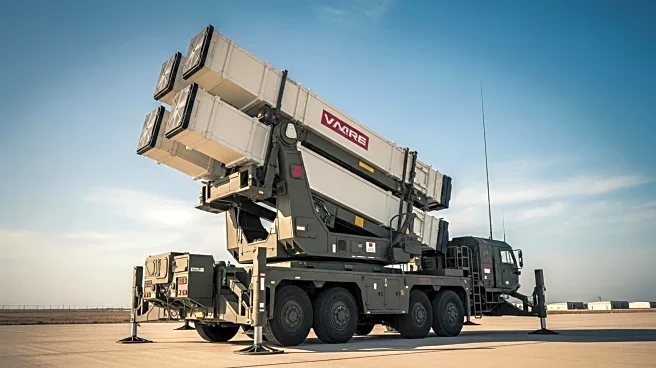What's Happening?
Japan's Acquisition Technology & Logistics Agency (ATLA) announced the successful test firing of a ship-mounted electromagnetic railgun on the JS Asuka. The test, conducted in June and July, marks the first time a railgun has been fired at a real vessel from a ship. The railgun launches non-explosive projectiles at speeds of approximately 2,500 meters per second, offering long-range capabilities and high penetration power. This technology is seen as a potential solution for countering hypersonic cruise missiles and enhancing anti-ship capabilities. Japan has been developing railgun technology since the mid-2010s, and the recent test signifies a significant advancement in military technology.
Why It's Important?
The successful test of Japan's railgun represents a major leap in military technology, potentially altering naval warfare dynamics. Railguns offer advantages such as rapid fire rates and high penetration power, which are crucial for intercepting advanced threats like hypersonic missiles. The U.S. Navy previously attempted to develop similar technology but canceled its project in 2021 due to cost and integration challenges. Japan's progress could prompt renewed interest and collaboration in railgun technology among global military powers, including potential partnerships with the U.S., France, and Germany. This development may influence future defense strategies and international military cooperation.
What's Next?
Japan plans to discuss further developments in railgun technology at the ATLA Symposium in November. The country is also exploring international collaboration, having already established agreements with France and Germany. There is potential for cooperation with the U.S., as Japan seeks assistance with guidance systems and power storage. The continued advancement of railgun technology could lead to its deployment in naval fleets, enhancing defense capabilities against emerging threats. Stakeholders in the defense industry and military alliances will likely monitor these developments closely.
Beyond the Headlines
The advancement of railgun technology raises ethical and strategic questions about the future of warfare. As nations develop more sophisticated weapons, the balance of power may shift, prompting discussions on arms control and international security. The ability to counter hypersonic threats could redefine naval engagements and influence geopolitical strategies. Additionally, the environmental impact of electromagnetic weapons and their integration into existing military systems may require careful consideration.













